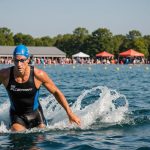Understanding Delayed Onset Muscle Soreness
Delayed Onset Muscle Soreness (DOMS) is a common experience for many following intense physical activity. But what exactly causes this aching pain? DOMS typically occurs 12-24 hours post-exercise, peaking around 48 hours, due to microscopic damage to muscle fibers. This muscle recovery phenomenon highlights repair processes in the body. During the soreness explanation, inflammation results from immune responses aiming to heal these tiny tears. Consequently, the muscle swells slightly, inducing the tenderness you feel.
The physiological mechanisms behind DOMS primarily involve eccentric movements, where muscles elongate under tension, such as downhill running or lowering weights. This activity type places unique stress on muscle fibers, making them more prone to damage and soreness. Whether you enjoy lifting, running, or engaging in fitness classes, understanding DOMS can help tailor your exercise routine.
In the same genre : Exploring Cutting-Edge Wearable Tech for Monitoring Muscle Growth: The Latest Innovations
Various exercise types can provoke DOMS, from weight training to high-intensity circuit training. It’s influenced by the muscle group targeted, exercise intensity, and individual fitness levels. Recognising these triggers can guide exercise enthusiasts toward effective muscle recovery strategies, reducing downtime and making workouts more sustainable.
Effective Immediate Relief Strategies
In the realm of immediate muscle relief, understanding the importance of active recovery and light exercise is crucial. Engaging in activities like swimming or walking can effectively reduce muscle soreness. These movements increase blood flow to sore areas, which helps in flushing out toxins and supplying oxygen and nutrients to the muscles, thereby aiding in recovery.
In parallel : Comparing Slow-Twitch and Fast-Twitch Fibers: How Sprint Training Shapes Muscle Adaptations
Another valuable tool in your recovery techniques arsenal is ice therapy. Cold compresses can be particularly beneficial for managing acute soreness. Applying ice reduces blood flow to the affected area, which decreases inflammation and swelling. It is especially useful right after physical activity when symptoms of soreness first appear.
Utilizing compression garments is an additional strategy for soreness relief. These garments create pressure on muscles, enhancing blood circulation and supporting stabilization. This pressure helps control swelling and reduces lactic acid production, ultimately aiding in quicker recovery. Compression garments are convenient and can be worn during or after exercise sessions.
Implementing these strategies can significantly contribute to acute soreness management, allowing individuals to resume their daily activities more quickly and effectively.
Long-Term Recovery Techniques
Understanding effective recovery methods is essential for muscle repair and achieving optimal performance. One crucial aspect of long-term recovery is maintaining proper nutrition. Consuming a balanced diet rich in proteins, healthy fats, and carbohydrates provides the necessary nutrients for muscle repair and growth. Adding supplements can also enhance recovery, with options like protein powders and amino acids complementing dietary intake.
Stretching and flexibility exercises play a significant role in recovery by improving circulation and reducing muscle stiffness. Integrating a routine of dynamic stretches before workouts and static stretches post-exercise can facilitate greater flexibility and aid in long-term muscle recovery.
Adequate sleep is another fundamental component of effective recovery methods. During deep sleep stages, the body releases growth hormones essential for tissue repair and growth. Ensuring 7-9 hours of quality sleep per night can significantly improve recovery outcomes.
Hydration is equally vital in the recovery process. Proper hydration helps maintain blood flow to muscles, preventing cramps and promoting the effective delivery of nutrients needed for muscle repair. Aim to drink 8-10 cups of water daily, adjusting intake according to activity level and environmental conditions.
Incorporating these recovery techniques will ultimately yield long-lasting benefits for both physical health and athletic performance.
Professional Insights and Expert Tips
Delve into the expert advice from fitness professionals to effectively manage DOMS (Delayed Onset Muscle Soreness). Engaging with these insights will empower you to enhance your recovery strategies and overall fitness routines.
Guidance from Physiotherapists
Physiotherapists emphasize gradual progression in exercise routines to prevent DOMS effectively. They recommend consistent dynamic stretching before workouts and static stretching post-exercise for optimal muscle recovery and injury prevention.
Insights from Fitness Trainers
Fitness trainers suggest incorporating varied intensity levels in workout plans. This tailored approach mitigates excessive muscle tension and supports balanced muscle growth. They advocate for routine modifications every few weeks to challenge muscles without overstraining.
Advice from Sports Medicine Specialists
Sports medicine specialists offer evidence-based recommendations for DOMS prevention. Hydration plays a pivotal role; maintaining fluid intake aids in muscular recovery. They also debunk common misconceptions, such as the belief that soreness is a necessary indicator of muscle growth, stressing that effective workouts do not always result in DOMS.
Testimonials and stories from fitness professionals emphasize practical strategies, including implementing proper rest days, balanced nutrition, and targeted foam rolling techniques to alleviate muscle soreness and enhance recovery.
Prevention Strategies
Preventing injury during workouts involves understanding key techniques and strategies. Exercise modifications play a crucial role in ensuring safety and efficiency. By adapting standard exercises, you can minimise the risk of Delayed Onset Muscle Soreness (DOMS) and other injuries. Customising exercises to suit personal fitness levels or physical limitations aids in achieving effective and sustainable workouts.
A critical element of injury prevention is gradual progression. Increasing workout intensity and volume at a steady, manageable pace helps your body adapt and strengthen without overstrain. This approach fosters improved fitness while reducing the likelihood of injury.
Incorporating a structured warm-up and cooldown routine is equally important. Proper pre-workout preparation, such as dynamic stretching and light cardio, primes muscles for exercise. Similarly, cooldown sessions aid in muscle recovery, keeping them flexible and reducing the severity of DOMS.
By fully embracing these techniques and routines, individuals can cultivate a workout regimen that’s not only safe but also optimally beneficial. Engaging in thoughtful prevention strategies ensures longevity in fitness pursuits, supporting continued progress and achievement without setbacks.
Personal Anecdotes and Testimonials
Personal experiences offer unique insights into overcoming Delayed Onset Muscle Soreness (DOMS). Various individuals have shared their stories and methods that truly worked for them. One personal experience recounted the initial surprise of DOMS following a new workout regime. Despite the initial discomfort, the individual quickly learned that gentle stretching and adequate hydration were crucial to their recovery. This experience emphasises that listening to your body and adapting recovery techniques is vital.
Recovery testimonials often highlight the importance of consistency and patience. One fitness enthusiast shared a simple tip: incorporating a consistent cool-down routine, including light aerobic activity and static stretching, significantly reduced his muscle soreness over time. This echoed the sentiment that gradual changes can yield long-term benefits, even if they seem minor at first.
Lessons learned from personal challenges with muscle soreness remind us that there’s no one-size-fits-all solution. Each person’s journey is different, but valuable insights can be gleaned from others’ experiences. Learning to balance physical activity with proper recovery practices enhances not only physical resilience but also builds mental discipline. These stories serve as motivating testimonials that overcoming DOMS is entirely achievable with the right strategies.
Conclusion and Recap of Key Takeaways
In the grand mosaic of recovery strategies, we have highlighted a few key pieces that form an effective approach to combating muscle soreness. Remember, it’s not just about one method; it requires a holistic approach that includes adequate rest, nutrition, and targeted exercises.
There’s no denying the convenience of summarizing these practices into a concise plan. First, incorporate stretches and light activities to gradually soothe your muscles. Hydration remains non-negotiable, as it is essential for flushing out toxins and keeping your body in peak condition.
Now, let’s talk consistency. Adopting these recovery strategies can yield long-term benefits if they become a regular part of your routine. The more you practice these strategies, the better equipped your body will be to handle physical stress.
To put it simply, muscle soreness shouldn’t discourage you from pursuing an active lifestyle. Rather, understanding and utilizing these effective strategies underscore the importance of ** maintaining a resilient and healthy body** over time.











